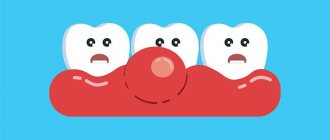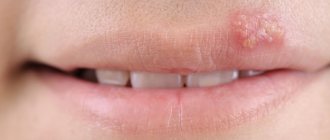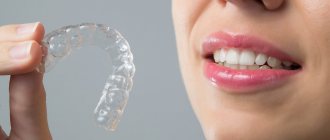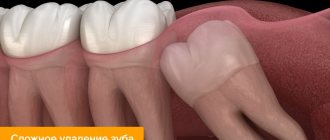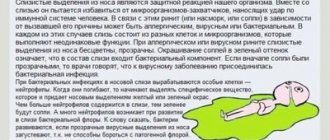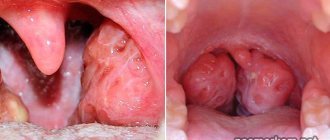What is pharyngitis?
This is an inflammation of the mucous membrane of the pharynx and its lymphoid tissue. With pharyngitis, the throat is sore, sore and irritated. The pain intensifies when swallowing. Pharyngitis usually develops with influenza and ARVI. Viral pharyngitis usually goes away on its own. Some other less common forms of pharyngitis may require treatment.
IMPORTANT! Information from the article cannot be used for self-diagnosis and self-medication! Only a doctor can prescribe the necessary examinations, establish a diagnosis and draw up a treatment plan during a consultation!
Symptoms that something is wrong with your throat
The feeling of a lump in the throat may be accompanied by a “soreness” in the throat, a feeling of incomplete inhalation, difficulty swallowing, discomfort in the neck and chest, a burning sensation or a sensation of a foreign body, although there are no changes when palpated (nothing is enlarged, not deformed, not inflamed).
A “lump” that appears once should not cause concern, since it is most likely a one-time reaction of the body to stress, overwork, or excitement of the nervous system.
If this phenomenon recurs, you should consult a doctor, as this feeling can become a painful symptom, “overgrown” with other manifestations: a feeling of a foreign body in the oropharynx, sleep disturbances, anxiety, loss of appetite and disruption of normal swallowing, surges in blood pressure and sensations of heart failure , diarrhea or constipation.
As a rule, timely and adequate treatment completely eliminates the unpleasant symptom.
When to go to the doctor?
Take your child to the doctor if your child's sore throat does not go away after breakfast.
Call an ambulance immediately if:
- the child has difficulty breathing;
- he cannot swallow;
- The infant is drooling unusually, which may indicate an inability to swallow saliva.
If an adult has pharyngitis, visit a doctor in the following cases:
- severe or prolonged (more than a week) sore throat;
- throat hurts often;
- difficulty breathing, swallowing, or opening your mouth;
- earache;
- joint pain;
- rash;
- fever above 38.3 for more than three days;
- blood in saliva or sputum;
- pain when turning the head;
- nodes and tumors in the neck;
- Hoarseness, hoarseness lasts more than two weeks.
Sore throat and gastritis: an unobvious connection
This will probably seem “strange,” but a sore throat can actually be a consequence of gastritis, or more precisely, gastroesophageal reflux disease (GERD). Pain in this case appears “on its own”, without other traditional signs of acute respiratory infections. But rinsing, inhaling or taking antibiotics obviously doesn’t make it better. So how not to confuse acute respiratory infections and GERD? And what else does pathology threaten?
What is GERD
Gastroesophageal reflux disease is a chronic pathology with a relapsing course, characterized by periodic spontaneous reflux of gastric contents into the esophagus and larynx, and the development of lesions resembling chemical burns.
This type of reflux is felt as heartburn or a sour taste after a burp, and most often appears after eating, during sleep, or when bending the body forward.
At the same time, it also occurs in a healthy body, after eating. True only if it is not accompanied by unpleasant sensations and extra-esophageal symptoms.
These symptoms include:
- pain behind the sternum, radiating to the neck, lower jaw, interscapular area and left half of the chest, which can simulate angina pectoris;
- sore and sore throat, hoarseness, laryngitis;
- as well as cough, shortness of breath and severe bronchospasm, reminiscent of asthma.
As you can see, GERD successfully disguises itself as several fundamentally different diseases, often leading clinicians down a false diagnostic and therapeutic path.
For example, “provokers” of coughing and choking are often sought among allergens. Chest pain leads to a cardiologist. Laryngitis is treated with antibiotics.
Such treatment, however, will not give any tangible results. After all, the true cause of the pathology lies in excessive acidity of the stomach and insufficiency of the lower esophageal sphincter (“flap” between the esophagus and stomach).
How to check for GERD
The classic way to detect GERD is 24-hour intraesophageal pH-metry.
However, the method cannot be used in a screening format and for self-diagnosis, since it requires the installation of a nasopharyngeal tube and is associated with the psychological experiences of the patient.
Unfortunately, medicine does not yet know another reliable and non-invasive way to assess acidity in the esophagus. However, GERD can be indirectly assumed using the Gastrocomplex blood test.
The complex includes the definition:
- Gastrina-17,
- Pepsinogen (I, II and their ratios)
- and antibodies to H. pylori,
which allows, with a high degree of efficiency, to detect the presence of hyperacid (with high acidity) gastritis and Helicobacter pylori infection, which are the “basis” of GERD.
In addition, the analysis is widely used to identify atrophic gastritis and the risk of gastric oncology.
Causes
As a rule, this is a viral infection (ARVI), in some cases it is bacterial (streptococcus, pneumococcus). In addition, the cause of pharyngitis may be:
- allergies to dust, mold, pet hair, pollen. Since allergies cause a runny nose, fluid can drain down the back of the nasopharynx and irritate the throat;
- dry air, especially in the morning;
- tobacco smoke, chemical irritants;
- overstrain of the vocal cords (long performances, loud screams at sports competitions, etc.)
- gastroesophageal reflux - reflux of stomach contents back into the esophagus. May be accompanied by heartburn, a lump in the throat, and hoarseness.
- HIV. Pharyngitis may be a sign of a recent HIV infection in the body. Also, people who have been infected with HIV for a long time may experience secondary acute and chronic pharyngitis caused by cytomegalovirus, oral candidiasis and common viruses that cause acute respiratory viral infections. These complications can be dangerous in HIV-positive people.
- Malignant tumors of the throat, tongue, and trachea can also manifest as pharyngitis, coupled with hoarseness, noise when breathing, blood in saliva and sputum, and a “knot” in the neck.
Rare causes of pharyngitis can be a throat abscess and epiglottitis, a serious condition in which the epiglottis, which looks like a petal between the trachea and larynx, becomes inflamed and blocks air from entering the airways. As a rule, epiglottitis in children is caused by a hemophilus influenzae infection, against which it is necessary to vaccinate on time.
Prevention
Preventive measures for cervical osteochondrosis include wearing warm clothes during the cold season, since osteochondrosis is associated with decreased immunity. To prevent degenerative processes, proper nutrition and vitamin therapy are necessary. It is recommended to consume dairy products, cereals, and products that contain gelatin. The diet must contain sufficient amounts of calcium. You cannot suddenly switch from intense physical activity to physical inactivity. In addition, chondrodystrophic processes can be associated with endocrine pathologies, for example, with disorders of the adrenal cortex, so it is necessary to be registered with an endocrinologist. It is imperative to monitor your body weight, since excess weight puts additional stress on the spine, even in the neck area.
To prevent a lump in the throat with osteochondrosis, vitamin therapy, control of nutrition and physical activity are used.
It is advisable to avoid heavy physical activity. People with sedentary jobs must sit properly at their desks and computers and not remain in an awkward position for long periods of time. Excessively soft furniture should be avoided. Your back should fit snugly against the back of a chair or chair; you need to stretch your neck every 15-20 minutes. You need to sit up straight. The table should be high enough so that there is no need to bend over too much while reading and other activities.
Correct redistribution of weight when carrying objects is important. For example, it is preferable to wear backpacks rather than single-shoulder bags.
The risk of osteochondrosis is increased in individuals suffering from pathological scoliosis.
Osteochondrosis of the cervical spine is associated with birth injuries, the prevention of which requires not only proper delivery, but also competent management of the entire pregnancy. If injury is inevitable, prevention consists of professional supervision of the child from an early age.
It is important to adopt the correct posture while sleeping. It is recommended to sleep on your back, in the fetal position and on your side with straightened lower limbs (in this case, it is better to place a pillow between your legs), and self-massage methods.
Risks and measures to prevent pharyngitis
Pharyngitis most often affects children and adolescents; adults also get sick, but somewhat less frequently. Also, the risks of pharyngitis increase with dry air, throat irritation from tobacco smoke or chemical reagents, allergies, weakened immunity, chronic or frequent infections of the nasopharynx.
You can reduce the likelihood of illness in the same way as in the case of other nasopharyngeal infections: wash your hands, do not drink from the same cup with others, cover your mouth when coughing and sneezing (do not “share” your viruses), wipe the screen and keyboard of phones and other devices etc.
Diagnosis of pharyngitis
Typically, the ENT examines the patient's throat, as well as his nose and ears, carefully palpates the lymph nodes, and listens to breathing using a stethoscope.
The streptococcal test is a simple and accurate way to diagnose bacterial pharyngitis. The doctor takes a scraping from the child's throat, and within 24-48 hours the result is ready. Streptococcal pharyngitis will have to be treated with antibiotics.
We have our own laboratory in the clinic, so you can always take all the necessary tests with us!
Diagnostics
A lump in the throat is not a pathognomonic sign indicating osteochondrosis of the cervical spine as a causative factor of the disease. Therefore, during the examination to make the correct diagnosis, an important step is differential diagnosis. The organs of the neck, in addition to the cervical spine, also include the larynx, pharynx, esophagus, trachea, and thyroid gland.
A feeling of constriction, a feeling of a foreign body in the throat can also occur with other infectious and somatic pathologies in these organs, for example, with hypertrophy of the thyroid gland, with mechanical damage to the walls of the oropharynx, with tumors of the larynx, with various diseases of the ENT organs.
Differential diagnosis takes into account the absence of signs of inflammation of the soft tissues of the throat, pharynx: temperature, redness, pathological changes in the mucous membranes.
Each patient who comes to Dr. Dlin’s clinic with complaints about problems in the musculoskeletal system undergoes a thorough diagnosis of the functional state of each segment of the spine to determine the causative factor.
To confirm or exclude the diagnosis of cervical osteochondrosis, hardware diagnostic methods are prescribed:
- X-ray of the neck and collar area shows changes in the structure of the bone tissue of the spine: growth of osteophytes, displacement of the vertebrae.
- MRI is a method that allows you to directly assess the condition of intervertebral discs and identify signs of osteochondrosis in the early stages.
- Duplex scanning of cerebral vessels to determine their patency.
- Rheoencephalography is a method by which the level of blood supply to brain structures is assessed and pathologies in the vascular bed are detected.
As part of the differential diagnosis, ultrasound of the thyroid gland, pharyngoscopy, indirect laryngoscopy, esophagoscopy, and gastrointestinal endoscopy are performed.
Treatment
Viral pharyngitis usually resolves within 5-7 days. The child should be provided with:
- peace and the opportunity to sleep as much as he wants;
- Drink plenty of fluids to relieve sore throats and prevent dehydration;
- air humidification;
- a sore throat can be relieved by both warm drinks and cold ice cream, especially popsicles;
- for a sore throat, it helps to gargle with a solution of table salt - a teaspoon per 250 ml of warm water;
- Children over 4 years old can be offered lozenges for sore throats. Do not give candy to small children - they may choke;
- do not smoke when your child is sick, avoid strong odors that irritate the throat;
- A sore throat and fever can be relieved by medications containing paracetamol and ibuprofen. Don't give children aspirin; in rare cases, it can cause deadly Reye's syndrome.
Confirmed bacterial pharyngitis is treated with antibiotics. You should not interrupt or stop the course, because this increases the likelihood of infection spreading to the joints, heart, kidneys and other organs. Continue taking antibiotics even if your symptoms are completely gone.
You can make an appointment by phone: + .
Feeling of a lump in the throat with VSD
Very often you can find in people suffering from VSD the sensation of a lump in the throat. It's one thing when there is a logical, although there may be an unpleasant and frightening explanation, for example, a tumor or severe inflammation that causes a narrowing of the larynx. But what to do in cases where there is a lump, but there are no reasons for it, and turning to a variety of specialists gives the same result: the person who contacts them has no reason to feel a lump.
What are the symptoms of a lump in the throat?
This symptom of VSD, like a lump in the throat, appears completely suddenly. One fine morning there is a feeling that something is interfering, preventing you from swallowing and breathing deeply as usual. At the same time, five minutes ago everything was in order, but any ordinary or everyday situation, accompanied by a little excitement, an increase in blood pressure and an increase in heart rate - and now, the feeling that someone is squeezing the neck. All you have to do is drink a sedative, come to your senses a little, and your condition will return to normal. But in any other stressful situation, the feeling of a lump in the throat appears again.
Unpleasant sensations can be either constant or periodic. At the same time, the sensations may differ from person to person; it may be a tickling sensation, a tingling sensation, a feeling of squeezing, or the inability to swallow, whether it is saliva or solid food.
Sometimes the feeling of a lump can develop into a state in which a person may realize that he has forgotten how to swallow and cannot do it. Then it comes to a panic attack. So, over time, a fear of swallowing in general and eating solid food may develop.
Causes of a lump in the throat with VSD
Vegetative-vascular dystonia in itself is a nervous disorder; suffering from VSD, a person is constantly in panic and fear of something. This, in turn, is triggered by the release of large doses of adrenaline into the blood.
Which part of the body the adrenaline will choose to express itself is not clear. For some, this manifests itself in pain in the chest area, for others, the gastrointestinal tract suffers, and for others, they experience spasms of the laryngeal muscles, which is the very sensation of a lump in the throat.
It is worth remembering that no other disease, for example, an enlarged thyroid gland, osteochondrosis or aneurysm, gives symptoms similar to a coma, no matter what anyone says.
What could be bothering your throat?
People who first feel a lump in their throat first think of the worst, of course, cancer. What else could create such sensations of interference if not a tumor? And the more panic moods grow in a person, the stronger the lump is felt.
You need to know that the most important difference between a lump in the throat during VSD and any serious disease of the larynx, esophagus or other respiratory organs is that during sleep the lump is not felt at all. When I wake up, everything is fine too. But as soon as you get up and feel more energetic, the sensations return. The whole point here is that until the brain woke up, the body felt good, but as soon as the brain returned to working condition, it remembered that there should be a lump, and the patient felt it again.
It is the normal state of the throat in the first five minutes after waking up that should assure a person that the issue here is not some mythical disease, but the state of the nervous system.
How to treat a lump in the throat?
In fact, it is very difficult for any person suffering from VSD to admit to himself that the problem is not a disease at all, but a disorder of the nervous system. Treatment for coma is the same as for VSD therapy.
- Taking psychotropic medications that reduce panic attacks to a minimum and have a calming effect in a dosage that is relevant for a particular patient.
- An attempt to come to terms with the fear of death and liberation from oppressive terrible thoughts. You can seek advice on this issue from a psychotherapist, but you will have to work on yourself on your own.
The feeling of a lump in the throat will not go away on its own and will poison your life.
He needs to be treated. Author: K.M.N., Academician of the Russian Academy of Medical Sciences M.A. Bobyr
